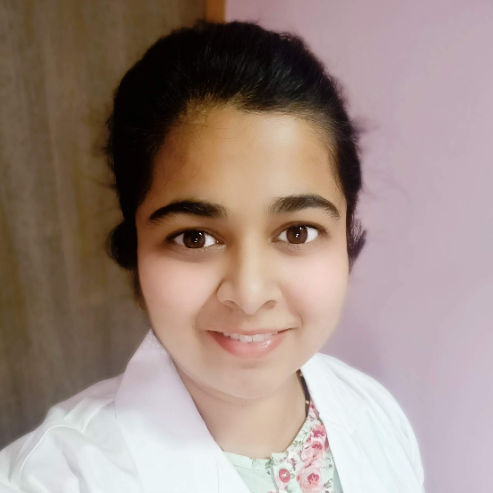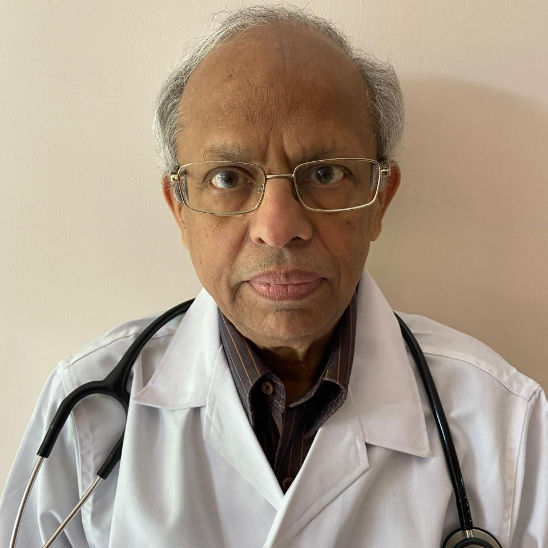Takayasu's Arteritis
Learn all the details of Takayasu’s arteritis, its symptoms, and how this disorder can be treated using the right medication with this comprehensive guide.

Written by Dr Shreya Sarkar
Last updated on 3rd Jul, 2025
Takayasu’s arteritis is a very rare form of vasculitis disorder. It causes blood flow inflammation in the walls of the largest arteritis of the body, which are the aorta and its main branches. This leads to narrowed or blocked arteries, which means reduced flow of blood to other parts of the body.
Takayasu’s arteritis results in a weak pulse or a loss of pulse in the arms, legs, and other organs. This is why it is also called the ‘pulseless disease’. Children and women between the ages of 20-50 are typically affected by Takayasu’s arteritis. It can cause arm and chest pain, high blood pressure, and eventually heart failure/stroke if left untreated for long.
Causes and Risk Factors
The exact cause of Takayasu’s arteritis is not yet known to anyone. Vasculitis, in particular, is classified as an autoimmune disorder. It is a disease where the body’s immune system attacks its own arteries by mistake.
Some believe that this disease might be triggered by a virus or an infection. But, this theory has not been proven yet. Furthermore, environmental and some genetic factors may also play a role. Although this disease occurs worldwide, it is mostly prevalent in Asian
countries.
Pathophysiology
The pathophysiology of Takayasu’s arteritis is a complex interplay of vascular remodelling, genetic factors, and immune-mediated processes. During the initial stages, the inflammation develops around the vasa vasorum (network of small blood vessels) and the medio-adventitial junction (the area where the media and adventitia of a blood vessel meet).
Individuals suffer from active inflammation and necrosis, often accompanied by mononuclear cell infiltration (chronic inflammatory reaction). In some instances, there might also be fragmentation of elastic fibres and laminar medial necrosis (a condition that targets the aorta).
Symptoms and Clinical Features
Individuals suffering from Takayasu’s arteritis display symptoms that can be classified into two stages.
During the first stage, patients usually suffer from,
Fatigue
Mild fever often accompanied by night sweats
Muscle and joint pains
Weight loss
During the second stage, the symptoms are,
Dizziness or fainting
Weak pulse
Diarrhoea often accompanied by blood in the stool
Anemia
Chest pain and shortness of breath
It is essential to note that most people usually do not have any symptoms. However, there have been cases where people have suffered from serious complications such as heart failure, heart attacks, kidney failure and strokes.
Consult Top Cardiologist
Diagnosis
Takayasu’s arteritis is diagnosed through a combination of clinical evaluation and imaging tests to confirm the condition and rule out similar disorders. The process typically involves:
A thorough review of the patient's symptoms and medical history
Physical examination to exclude other potential disorders with overlapping symptoms
Blood pressure measurement, along with blood and urine tests to detect inflammation
Imaging tests such as computed tomography angiography (CTA) or magnetic resonance
angiography (MRA) to confirm the diagnosis
Regular follow-up visits to monitor the progression of the disease and adjust treatment as needed
Treatment Options
Treatment of Takayasu’s arteritis is done to control the inflammation with the help of medicines and reduce the chances of further damage to the blood vessels. For this purpose, a medical expert may prescribe the following drugs,
Corticosteroids: These are given to reduce inflammation, and the concerned individual may need to use this drug for the long term. A few common side effects are weight gain and bone thinning.
Other drugs: If there is no improvement noticed with corticosteroids, then the healthcare professional will prescribe other medications to suppress the immune system. They are azathioprine, methotrexate, and leflunomide.
Biologics: As a last resort, the doctor will prescribe biologic drugs to correct abnormalities in the immune system. These are complex proteins that are derived from living organisms.
More often than not, these medications can have serious side effects. For example, people going through the treatment for Takayasu’s arteritis may experience a lowered ability of the body to fight infection. Therefore, it is very important for all patients to regularly visit their doctors. A healthcare professional might recommend other medications to offset these side effects.
Furthermore, infection prevention is equally important. Therefore, doctors treating patients with this disorder usually recommend getting all vaccines, such as flu shots or shingles vaccination, to reduce this increased risk of infection.
In severe cases where the arteries have excessively narrowed or blocked, surgery may be required. This can include,
Bypass surgery: This is when a vein is removed from a different part of the body and attached to the blocked artery.
Blood vessel widening: A tiny balloon gets inserted through a blood vessel into the affected artery. It expands and widens the blocked area and then is removed carefully.
Aortic valve surgery: If there is significant leakage of the valve, surgical replacement of the aortic valve will be required.
Additionally, the individual will be asked to make certain lifestyle changes, such as eating a healthy diet regularly, regular aerobic exercise, and staying up-to-date on vaccines.
Prognosis and Long-term Management
For some people, the disorder occurs once and does not return again. However, for the rest, Takayasu’s arteritis is either chronic, goes away and returns again, or drastically worsens.
There have been cases where symptoms and laboratory test abnormalities reveal that the disorder is not active. But, during imaging studies, new symptoms or abnormalities were detected.
In order to not further worsen the condition, people suffering from Takayasu’s arteritis are advised to stop the usage of all tobacco products. This will help reduce the risk of injuring the blood vessels and tissues even more.
Research and Future Directions
The future management of Takayasu’s arteritis looks promising with the advancements in biomarkers and molecular profiling. Cytokine levels or genetic markers can help diagnose and monitor disease activity. This, in turn, can aid in predicting treatment responses and guide treatment decisions.
Additionally, precision medicine can help tailor therapies for Takayasu’s arteritis based on individual characteristics. These include genetic profile, clinical presentation, and disease phenotype, among other factors. In this way, healthcare specialists can suggest personalised treatment plans for their patients.
Conclusion
People coping with Takayasu’s arteritis can often feel overwhelmed. All the fatigue, dizziness, and medication side effects can very easily take a toll on the mental health of individuals, affecting personal relationships and work. Therefore, it is suggested to talk about it and share the experience with close friends and family members. In this way, patients will feel relief, if not more. Furthermore, there are also various support groups that can help such individuals connect with others suffering from the same disorder.
Unfortunately, there is currently no cure for Takayasu’s arteritis. That being said, early detection, proper treatment, and ongoing monitoring can help patients achieve a good prognosis.
Consult Top Cardiologist
Consult Top Cardiologist

Dr. Anand Ravi
General Physician
2 Years • MBBS
Bengaluru
PRESTIGE SHANTHINIKETAN - SOCIETY CLINIC, Bengaluru

Dr. Tripti Deb
Cardiologist
40 Years • MBBS, MD, DM, FACC, FESC
Hyderabad
Apollo Hospitals Jubilee Hills, Hyderabad

Dr. Zulkarnain
General Physician
2 Years • MBBS, PGDM, FFM
Bengaluru
PRESTIGE SHANTHINIKETAN - SOCIETY CLINIC, Bengaluru

Dr Nazneen Khan
Cardiologist
7 Years • M.B.B.S, M.D (MEDICINE), DrNB CARDIOLOGY
Pune
Apollo Clinic, Viman Nagar, Pune

Dr. E Prabhakar Sastry
General Physician/ Internal Medicine Specialist
40 Years • MD(Internal Medicine)
Manikonda Jagir
Apollo Clinic, Manikonda, Manikonda Jagir
(150+ Patients)
Consult Top Cardiologist

Dr. Anand Ravi
General Physician
2 Years • MBBS
Bengaluru
PRESTIGE SHANTHINIKETAN - SOCIETY CLINIC, Bengaluru

Dr. Tripti Deb
Cardiologist
40 Years • MBBS, MD, DM, FACC, FESC
Hyderabad
Apollo Hospitals Jubilee Hills, Hyderabad

Dr. Zulkarnain
General Physician
2 Years • MBBS, PGDM, FFM
Bengaluru
PRESTIGE SHANTHINIKETAN - SOCIETY CLINIC, Bengaluru

Dr Nazneen Khan
Cardiologist
7 Years • M.B.B.S, M.D (MEDICINE), DrNB CARDIOLOGY
Pune
Apollo Clinic, Viman Nagar, Pune

Dr. E Prabhakar Sastry
General Physician/ Internal Medicine Specialist
40 Years • MD(Internal Medicine)
Manikonda Jagir
Apollo Clinic, Manikonda, Manikonda Jagir
(150+ Patients)